Ida Blanch Joslin, the 11th child of Lysander and Lydia Robison Joslin, was born on July 11, 1863 in Whitley County, Indiana. She was three years old when the family moved to Jefferson County, Iowa. In August 1868 they returned to Whitley County then in 1877, Lysander and Lydia moved to Barton County, Kansas taking with them their four youngest children: 17 year old Andrew; Ida, 13; Della, 10; and Elmus, age 8.
Now, a bit of a mystery develops. Among those listed in the household of Lysander in the 1880 federal census for Cheyenne township, Barton County, Kansas was a one year old son, Charles Joslin. It is not likely that Charles is actually a son of Lysander and Lydia as Lydia would have been about 54 years old when Charles was born. It is more likely that Charles was a son of their daughter Ida, who would have been about 15 years old when he was born. Charles lived with Lysander and Lydia. He is listed in the 1885 and 1895 Kansas state census records with them. There is a transcription of "Father's Bible" which lists all of the children and their dates of birth. Charles is not among those listed. We (Joslin researchers) had not had any success in locating Charles until recently.
In December I decided to check the World War I Draft Registration Cards on ancestry.com and found the record for Charley Sylvester Joslin. Dated September 12, 1918, his permanent home address was given as the National Military Home in Kansas. He was 39 years old, born March 4th 1879. But what was most interesting was the name of his nearest relative: Mrs. S. T. Lewis. The name of Ida's second husband was Sam Lewis. In the 1930 census for the National Military Home, Delaware Township, Leavenworth, Kansas (page 136) is a Charley S. Joslin, male, white, 51, single, born Kansas, parents born Indiana, no occupation, veteran of Sp [Spanish-American War].
Another researcher then found a record of burial for Charley in the Leavenworth National Cemetery, he died April 25, 1934. Next step will be to see if we can get a copy of his death record and/or obituary. I also found a military pension card for a Charley S. Joslin. The card shows he served in Co. "I" 17 Reg't U.S. Inf., Enlisted Sept. 27, 1902, Discharged Sept. 26, 1905. The dates of service don't coincide with the Spanish-American War so I'm not sure if it is worth spending $75 for a copy of his record to satisfy my curiosity to find out if this is "our" Charley.
Okay, now, back to Ida. On July 20, 1882 Ida was married to John G. Dressler at Oden, Barton County, Kansas. John was about 15 years older than Ida. In December 1883 their daughter Elnora was born, followed on February 24, 1885 by the birth of their son, Joseph. The 1900 census shows John Dressler living with his second wife. They had been married 3 years, so we know that John and Ida were divorced before 1897. Joseph was living with his father in Russell County, Kansas and Elnora was with her mother living in a boarding house on McGee Street in Kansas City, Missouri.
Ida has not been located in the 1910 census yet. But we know from the draft registration card of Charles Joslin that she was married to Sam Lewis prior to September 1918. In 1920, Sam and Ida were living on East 9th Street Kansas City, Missouri and in 1930 they were living on Wabash Street, Kansas City, Missouri.
We haven't discovered when Elnora Dressler died. She has a marker with no dates next to that of her mother and Sam Lewis in Mt. Washington Cemetery, Kansas City.
The only clue we had regarding the whereabouts of Joseph Dressler was in Ida's obituary which stated that a son, Joseph, lived in New Mexico. Once the census indexes became available online it was a relatively simple task to locate him. To make a long story short, in September .., I made contact with a grandson of Joseph Dressler. Joe had married Belva Roe about 1904 in Kansas and had three children (Arthur born 1905, Lola born 1907, and Chester born 1910) before moving to Torrance County, New Mexico sometime between 1910 and 1920. Joe didn't have any contact with his mother until after his father passed away. He did visit her several times and took care of settling her estate.
I sent the information that I had on John and Ida to Joseph's grandson along with some of the information on Lysander and Lydia. I also included some blank family group sheets, hoping he'd fill them out with the missing information, but alas, I never heard from him and having gotten off onto other things, never followed up.
Ida Joslin Dressler Lewis passed away on March 4, 1937 in Kansas City "of pneumonia which followed influenza. Mrs. Lewis and her husband were stricken with illness some weeks ago and were taken to the hospital. Mr. Lewis passed away four weeks ago. Mrs. Lewis died of shock when told of her husband's death last Friday by a friend who visited her at the hospital." She was 73 years old.
The letters from Ida being posted were written to her sister, Malissa Joslin Brubaker Bower, who passed away at the age of 88 on September 30, 1937 - just six months after Ida's death. The other two sisters mentioned in the letters were Roxie Parkison, who died March 5, 1941 aged 87 in Ottawa County, Oklahoma and Della Quillen who died February 7, 1943 in Darlington County, South Carolina, age 76.

Ida Blanch Joslin Dressler Lewis and her husband Sam Lewis

Caption on back of the photo:
back yard under the Peach Trees the building is out in the ally
an old Garage of neighbor it spoiles the Picture he is an old ___
Upside down text was written by Malissa:
Sister Ida Lewis & hubby Sam Lewis Kansas City MO


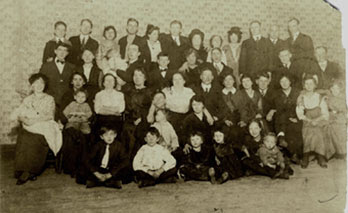 Somehow old records suddenly appeared, solving some puzzles while sprinkling new question marks all over the charts.
Somehow old records suddenly appeared, solving some puzzles while sprinkling new question marks all over the charts. But sometimes a vignette like this one looks quite similar to some place 1200 miles away and a dozen years ago.
But sometimes a vignette like this one looks quite similar to some place 1200 miles away and a dozen years ago. But it bloomed in July rather than May, and never at the feet of a 'Meyer's Improved' lemon tree!
But it bloomed in July rather than May, and never at the feet of a 'Meyer's Improved' lemon tree! 










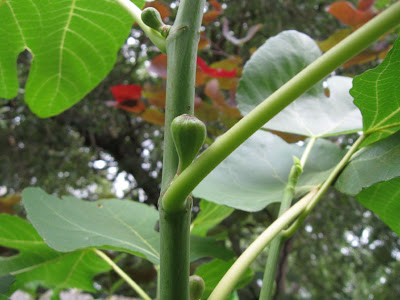
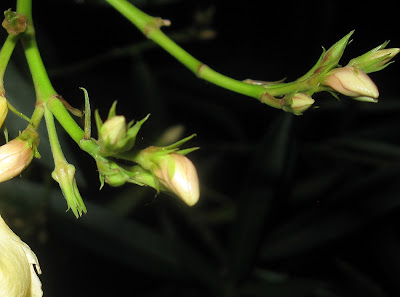

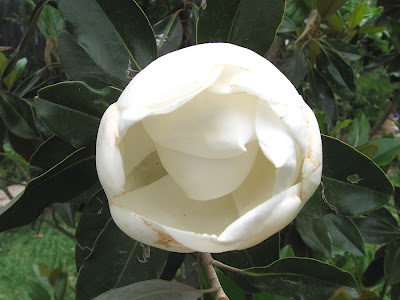
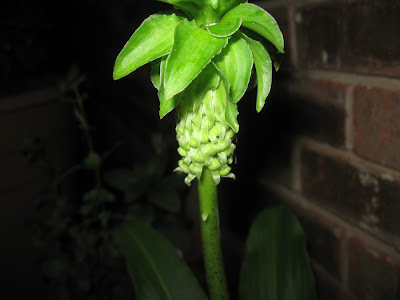
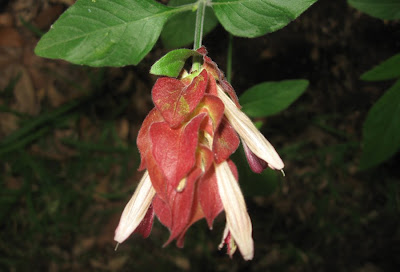
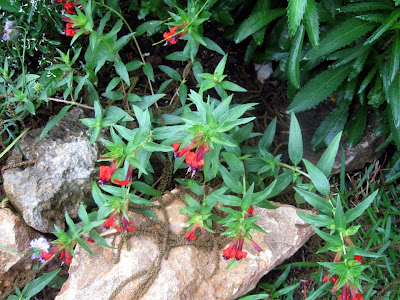
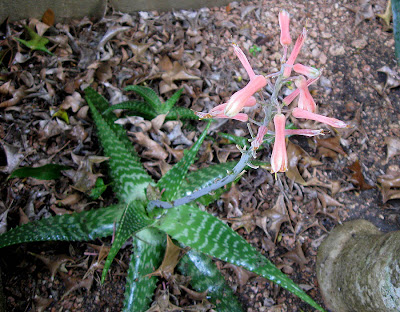



 But when put to the test, Eustacia came through with flying colours. We took the Pashleys on the Minuteman Trail, where we had previously only gone on our roadbikes. Pashleys are
But when put to the test, Eustacia came through with flying colours. We took the Pashleys on the Minuteman Trail, where we had previously only gone on our roadbikes. Pashleys are  Gaining a better understanding of the gearing has also helped tremendously. And of course, a broken-in saddle plays a big role in comfort level (I know that Sigrid of
Gaining a better understanding of the gearing has also helped tremendously. And of course, a broken-in saddle plays a big role in comfort level (I know that Sigrid of 
